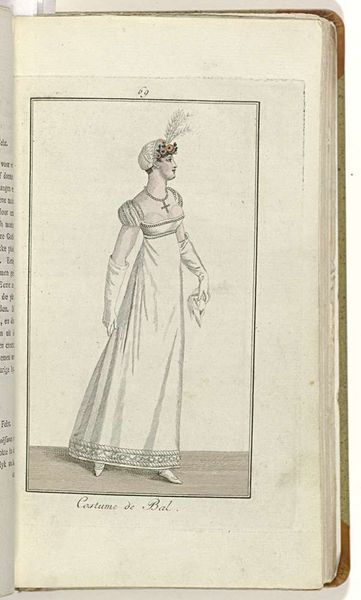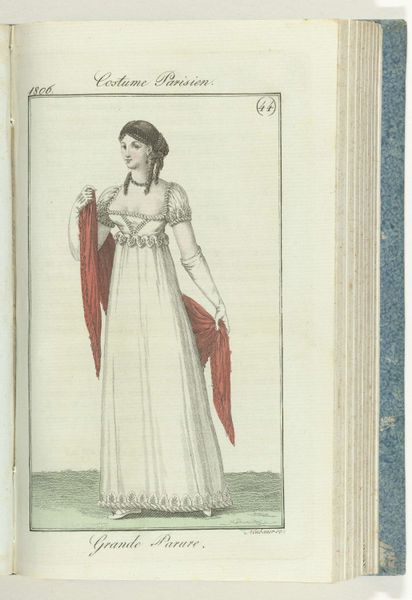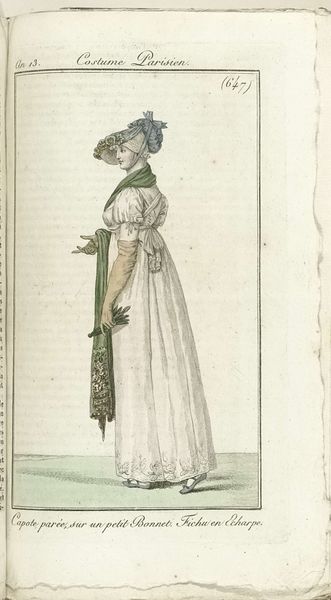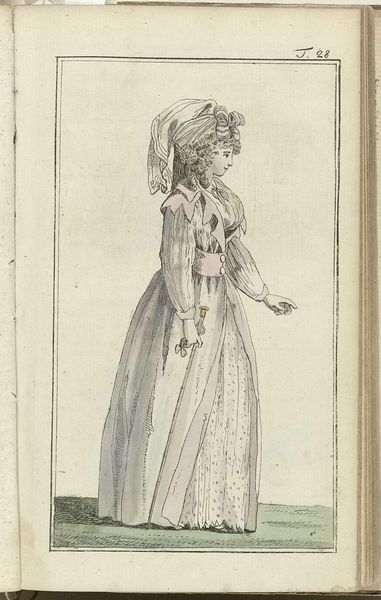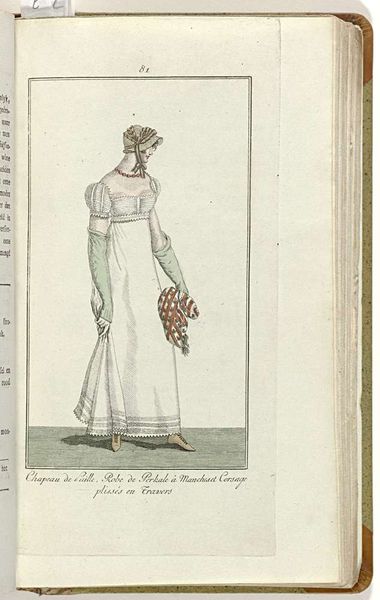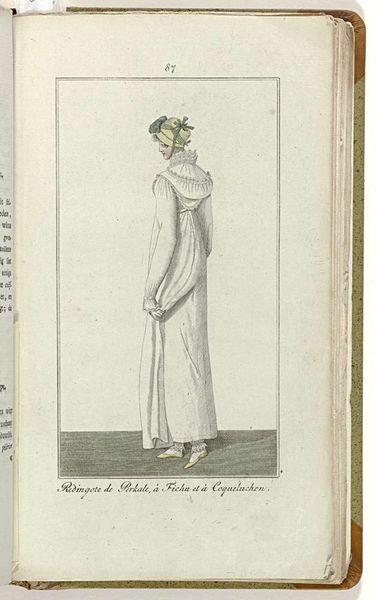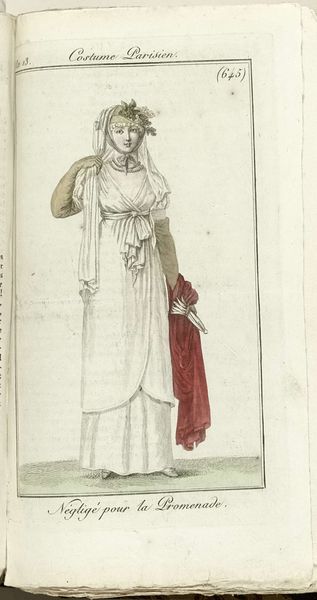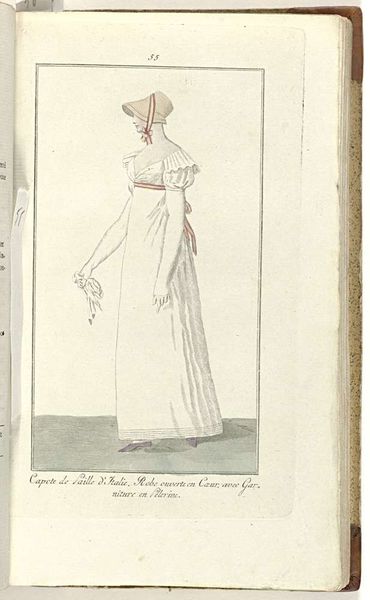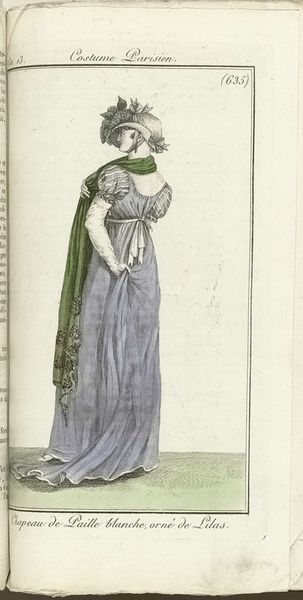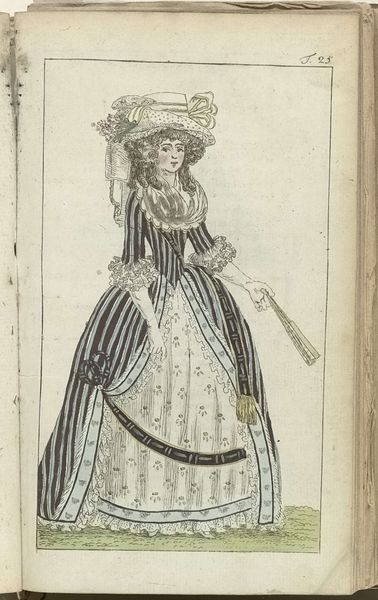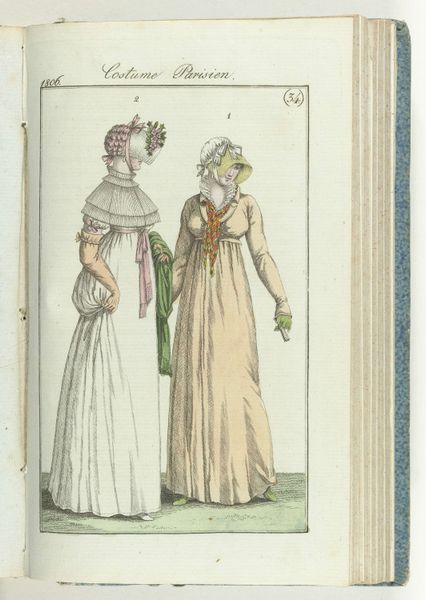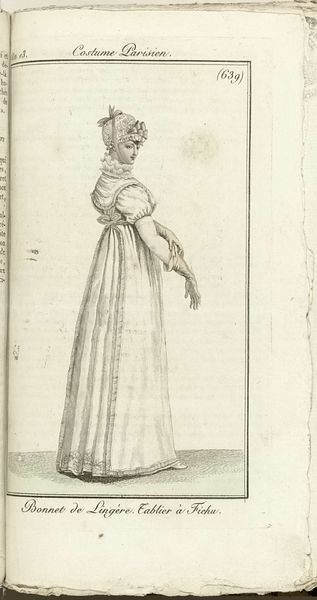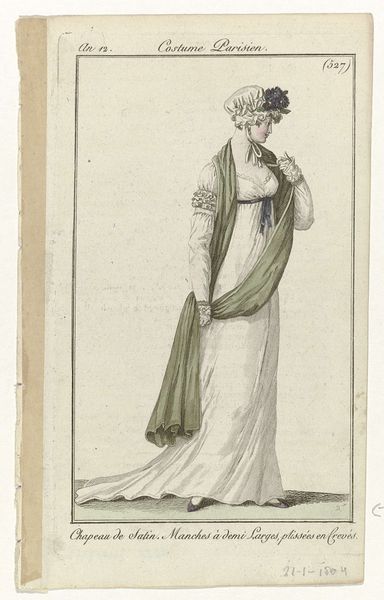
Journal des Dames et des Modes, editie Frankfurt 1 septembre 1806, Costume Parisien (36): Coeffure à L'enfant. Canezou en fichu. 1806
0:00
0:00
drawing, coloured-pencil, print
#
portrait
#
drawing
#
coloured-pencil
# print
#
coloured pencil
#
romanticism
#
watercolour illustration
Dimensions: height 188 mm, width 115 mm
Copyright: Rijks Museum: Open Domain
Curator: Before us is a print from an issue of *Journal des Dames et des Modes*, out of Frankfurt from September 1, 1806. Its subtitle indicates it shows a "Parisian Costume," specifically a hairstyle *à l'enfant* and a *canezou en fichu*. Editor: It's strikingly simple. The color palette is minimal, almost ghostly. But that high-waisted silhouette is immediately recognizable. Very delicate. Curator: It perfectly embodies the neo-classical style, influenced by the rediscovery of ancient Greek and Roman art. Fashion plates like this were essential in disseminating these styles. The periodical itself served as a vital organ in circulating cultural tastes and societal values of the period. Editor: I'm curious about the labor involved. Prints like this needed to be rapidly produced but maintain quality. Consider the typeset, the ink production and distribution; someone engraved the initial design and then had to add the color… all demanding precise skill, not unlike the fine needlework they showcased. Curator: Absolutely, these fashion plates held considerable socio-political influence. This print exemplifies an aesthetic linked to wealth and social status but also the post-revolutionary desire to codify modes of representation tied to notions of freedom and appropriate femininity. Notice how this plate subtly emphasizes proper attire and comportment, serving as a guide for its readers. Editor: It almost feels like an instruction manual, outlining the fabrics and silhouettes that dictated how the aspirational dressed. Yet, the colors seem carefully chosen. Nothing loud or jarring – perhaps to reflect the times as conservative forces gradually settled on fashion as an arbiter of taste, reinforcing societal stratification through textile choices. Curator: Indeed. Publications like this helped to define, solidify, and distribute cultural values and norms among a specific class. The focus wasn't simply clothing but a whole system of taste and social expectations. Editor: Looking at the means of reproduction and the skilled labor inherent, one can start unpacking the complicated politics of representation. And consider the dissemination process - how easily can fashion influence those on the fringes of fashionable society. Curator: It's fascinating how such seemingly simple illustrations served to enforce hierarchies through style. Thank you, this helps frame this deceptively plain image and allows for a better understanding of it in its contemporary world. Editor: Likewise. Highlighting the materials and techniques behind such an artwork shifts one's interpretation, and further examines it beyond representation.
Comments
No comments
Be the first to comment and join the conversation on the ultimate creative platform.
